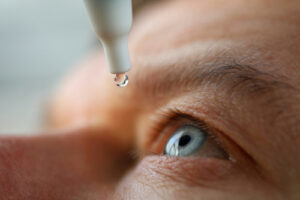When it comes to common eye conditions, it’s essential to understand their signs and symptoms. That way, you can stay vigilant about your eye health.
Glaucoma is a serious eye condition that has the potential to permanently damage your vision. But how do you know if you have this condition? It’s not always as obvious as you might think.
Keep reading to find out what the signs and symptoms of glaucoma are!
What Is Glaucoma?

Glaucoma is a group of eye conditions that affect the optic nerve at the back of the eye. Most often, they are related to your eye pressure or intraocular pressure (IOP).
Your eyes contain a fluid called aqueous fluid. Transparent and primarily made up of water, this fluid provides nutrients, among other functions.
Since this fluid is constantly being created, there is a constant flow of fluid out of the eye. This balance is what determines your intraocular pressure.
With glaucoma, this pressure becomes too high. This can happen because the eye produces too much fluid or because fluid does not drain as it should.
When IOP exceeds healthy levels, the optic nerve can get damaged.
What is the Optic Nerve?
Located at the back of the eye, the optic nerve is a crucial structure for visual processing. Its role is to transport visual information from the eye to the brain.
You cannot see without it. When damaged, it can lead to various degrees of vision impairment.
What Are the Different Types of Glaucoma?
The two primary types of glaucoma are called open-angle glaucoma and closed-angle glaucoma. Open-angle glaucoma is the most common.
When you have open-angle glaucoma, there is an issue with the eye’s drainage network. This can slow down the outward flow of fluid.
As a result, intraocular pressure gradually increases over time. Angle-closure glaucoma is rarer.
In this case, fluid cannot drain normally and quickly builds up instead, pushing the iris into the trabecular meshwork. The trabecular meshwork is an area of tissue at the front of the eye that acts as a drainage pathway.
This causes a sudden rise in eye pressure.

Who Can Get Glaucoma?
Anyone can get glaucoma. However, it is much more prevalent among those who are forty and older.
While the exact reason for this is unknown, it may be because the optic nerve becomes more susceptible to damage as time goes on. The drainage pathway may also become less efficient due to the aging process.
Some factors are known to increase your risk of developing glaucoma. In addition to age, these include:
- A family history of glaucoma
- Farsightedness or nearsightedness
- Past trauma to the eye
- Prolonged use of steroids
- Other conditions, such as diabetes and high blood pressure
What Are The Signs and Symptoms of Glaucoma?
Because glaucoma typically develops gradually, there are often very few discernable symptoms. For this reason, glaucoma is known as the “silent thief of sight.”

Most of the time, you will not experience any symptoms until significant damage has occurred, often years after it began developing. Even in the earlier stages, when vision loss occurs, it is usually not noticeable due to the way the eye compensates for it, filling in gaps in your vision.
Once open-angle glaucoma advances to the point where it starts to damage the eye, you will experience peripheral vision loss, often in the form of blind spots.
Without treatment, this will grow to impact more and more of your visual field. Eventually, glaucoma can cause total blindness.
Unfortunately, once this happens, it is irreversible. Due to its sudden onset, angle-closure glaucoma involves more symptoms.
It can be painful in the eyes, head, or both. You may also experience eye redness, nausea, vomiting, visual distortions like halos, and blurry vision.
If you are experiencing the symptoms of angle-closure glaucoma, call your eye doctor right away.
Vision loss can be rapid. Without treatment, scars can form that will permanently prevent fluid from flowing out of the eye.
Is Glaucoma Preventable?
While some risk factors can be controlled, glaucoma is not completely preventable. However, you can take measures to reduce your likelihood of experiencing significant damage from it.

The best thing you can do to avoid lasting vision damage from glaucoma is to visit your eye doctor for regular eye exams. Glaucoma poses the highest risk to your vision when it goes undetected.
Early diagnosis and intervention are key to minimizing its impact on your vision and quality of life. Evaluation for signs of glaucoma is part of any routine eye exam.
Treatment, in the form of eye drops and surgery, can help prevent glaucoma from progressing any further and causing permanent damage to your vision.
Do you want to learn more about glaucoma? Schedule an appointment at Cheema MD Eye Care in Kingston, NY, today!



